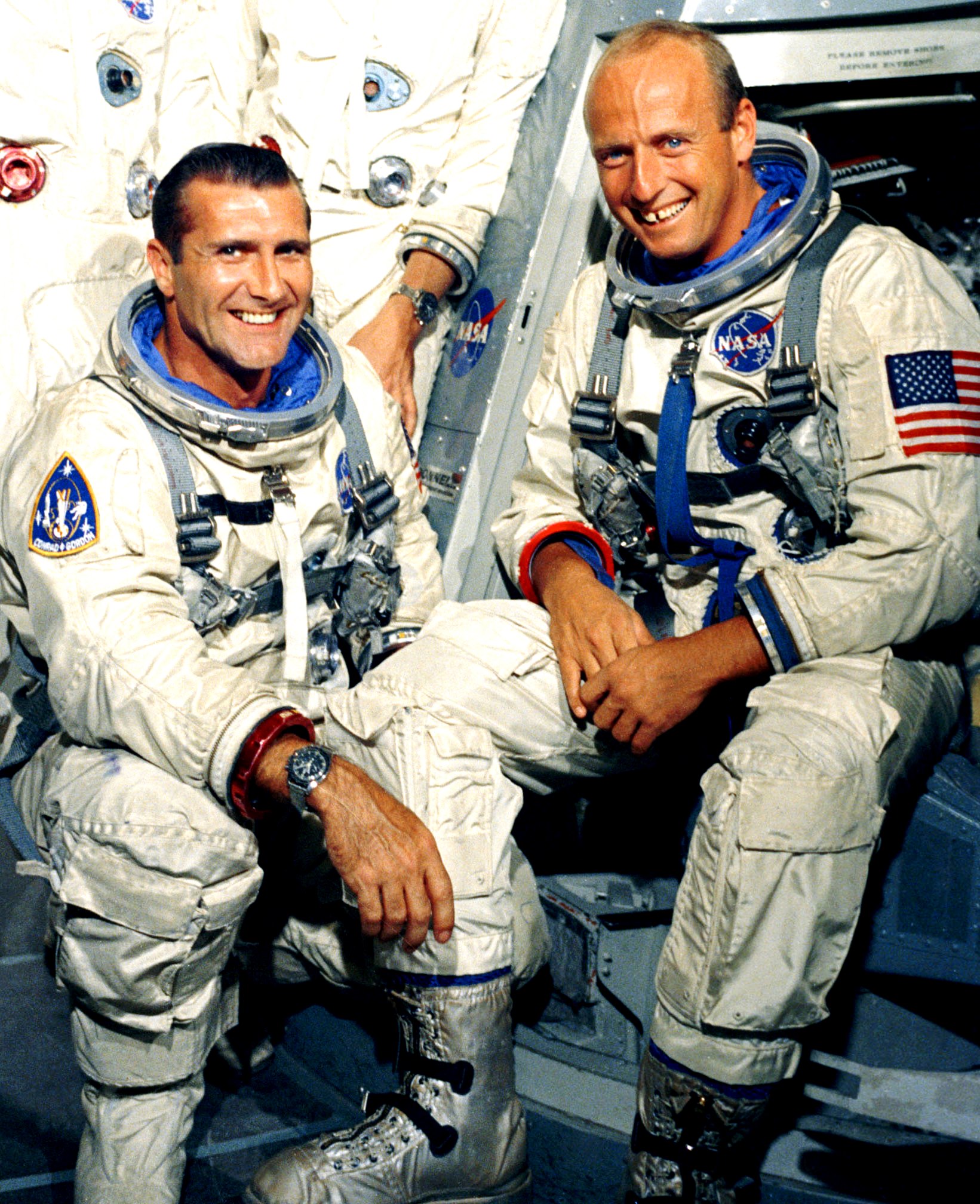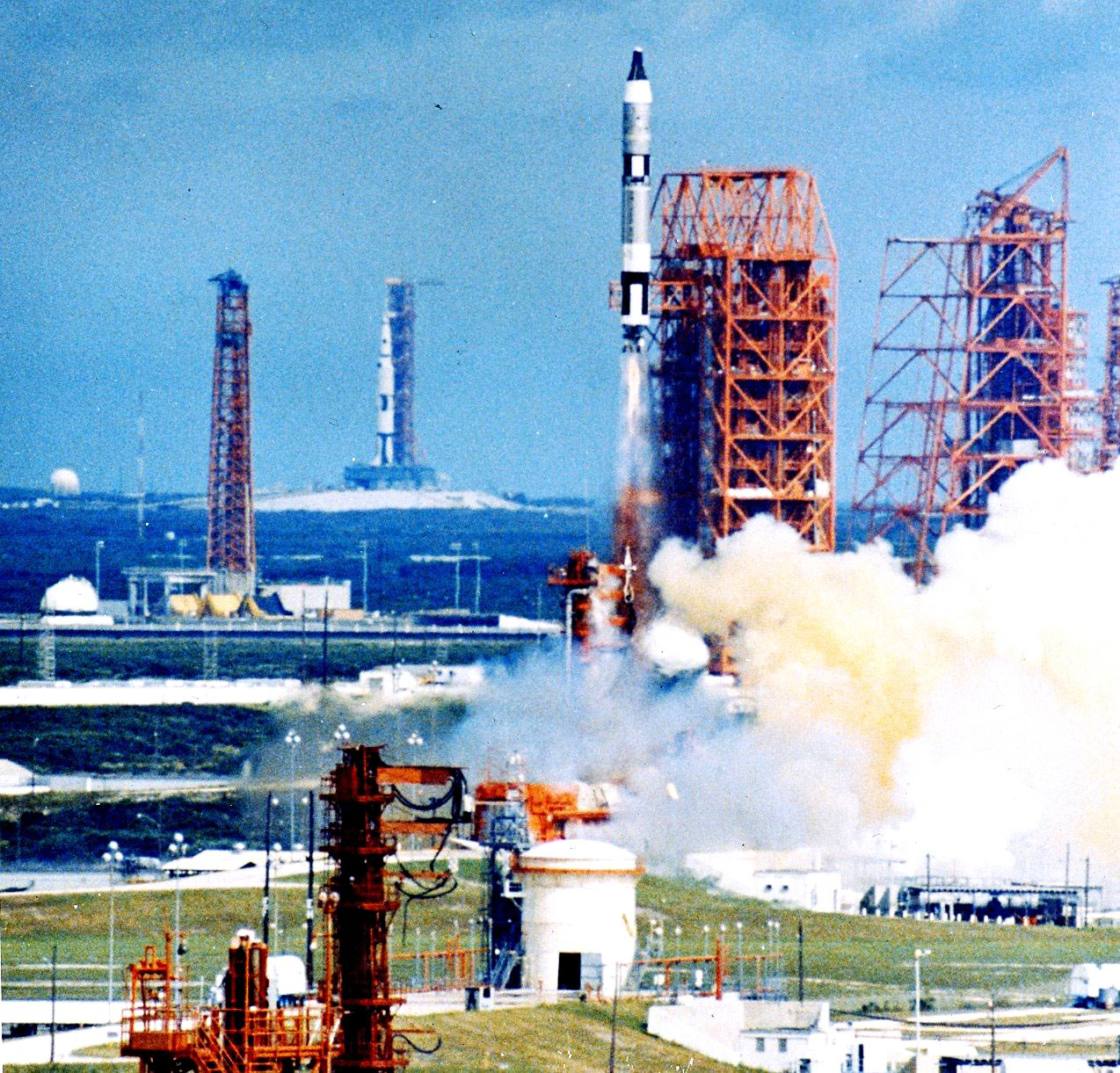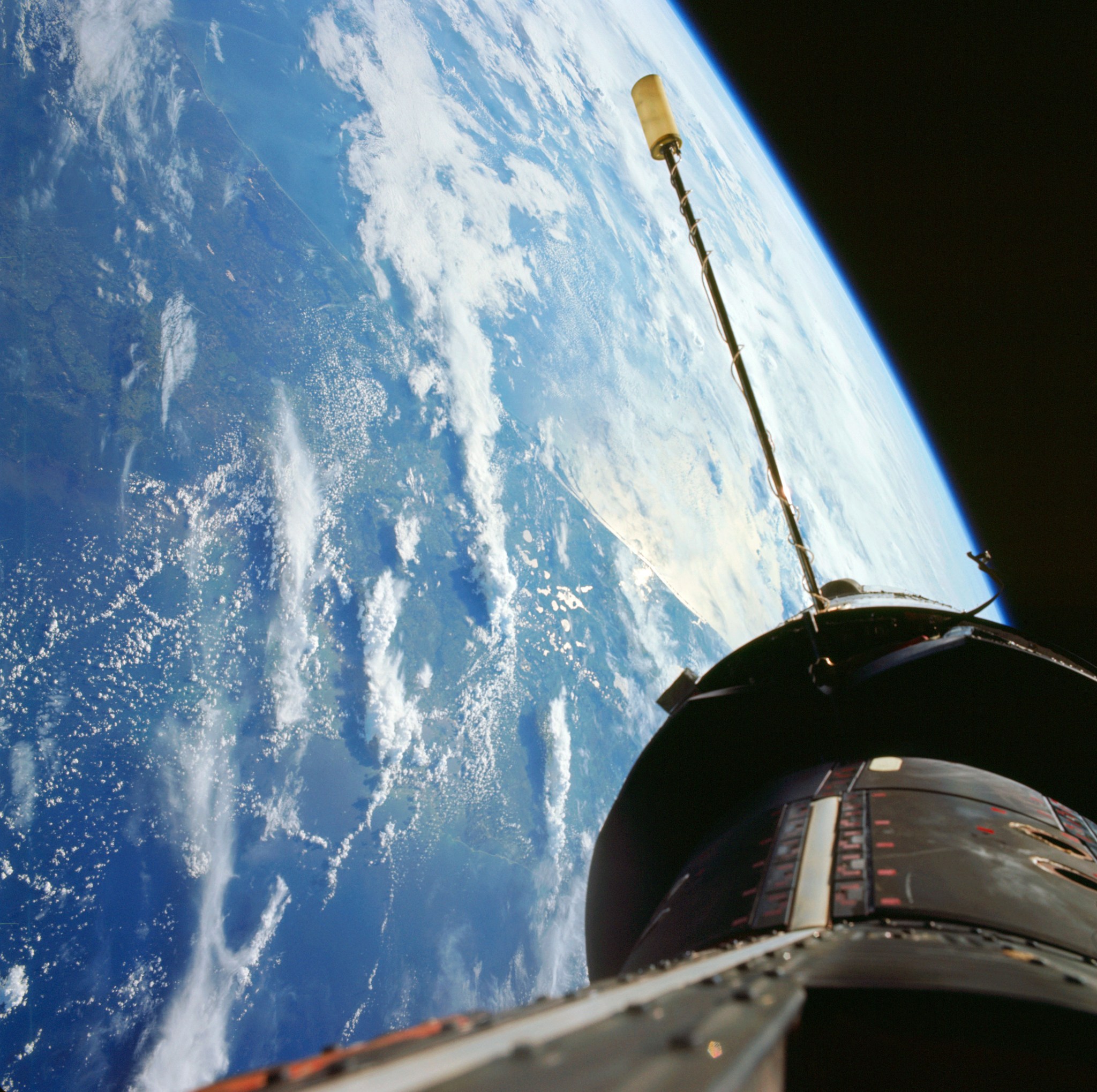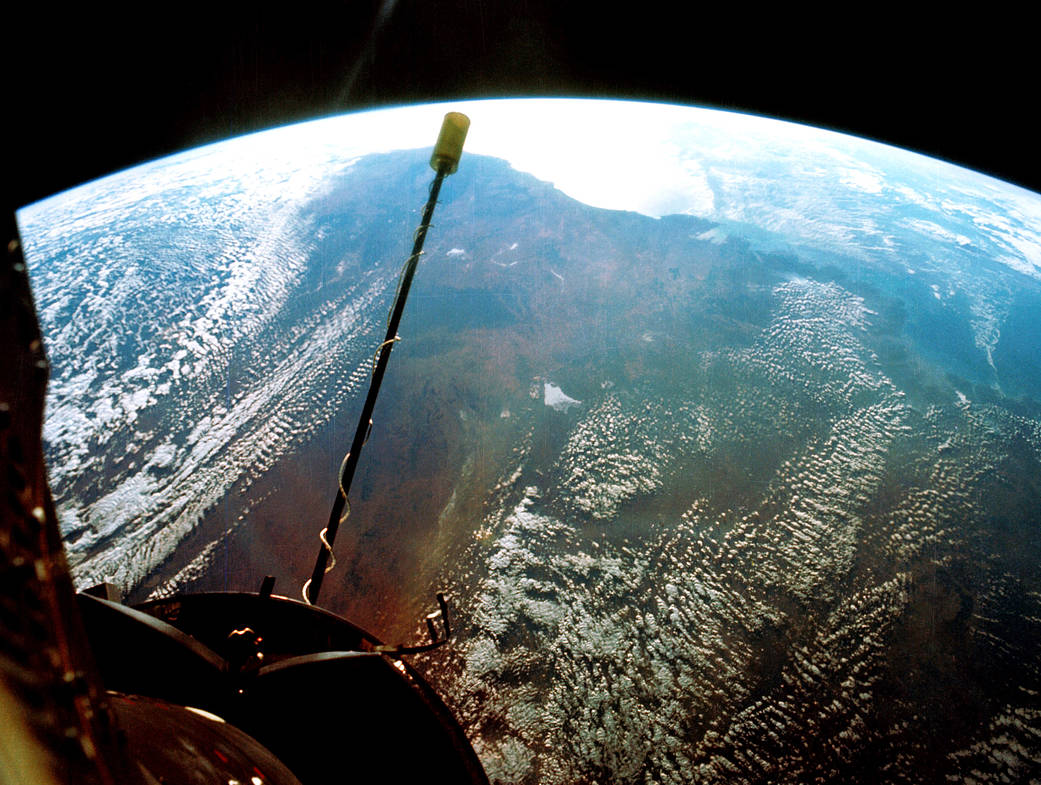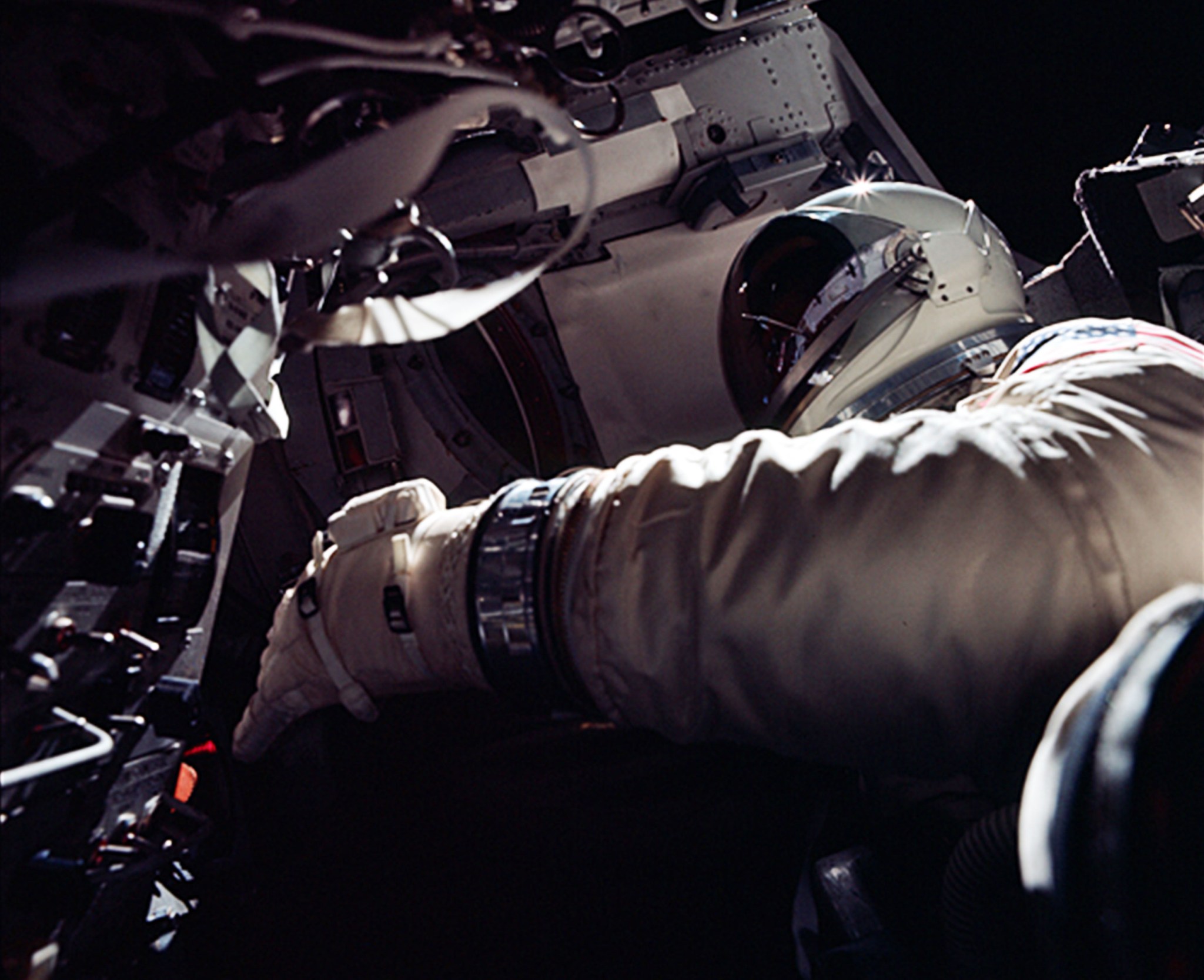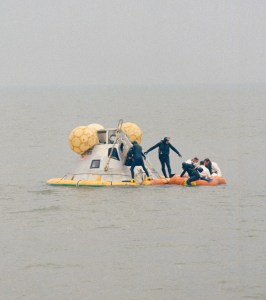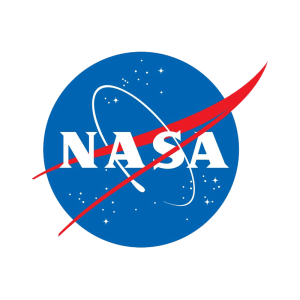“I tell ya from up here the world is round. It is spectacular. It’s fantastic,” said Gemini XI command pilot Charles “Pete” Conrad as he and pilot Dick Gordon looked down from their lofty vantage point. Their record-shattering altitude of 850 miles above the Earth was only one highlight of a demanding, three-day mission in September 1966.
The first rendezvous between two orbiting spacecraft occurred only nine months earlier. On each succeeding Gemini mission rendezvous had taken about four orbits – approximately six hours — to complete. But, when Apollo astronauts lift off from the moon, the lunar module was set to rendezvous with the command module on the first orbit. To advance NASA’s capabilities and prove this was feasible, plans called for Conrad and Gordon to do just that — a “direct ascent” or first-orbit — rendezvous with a separately launched Agena target vehicle.
“This will impose a much tighter launch window on the Gemini ground crews,” said Merritt Preston, deputy director of Launch Operations at NASA’s Kennedy Space Center in Florida. “Essentially, we’ll have to launch the Gemini space vehicle on an on-time basis. It will be a very short (launch) window.”
Preston pointed out that several flights in the past had launched exactly on time.
“The teams have both the capability and the confidence to do the job,” he said.
In addition to the link-up with an Agena and using its engine to boost Gemini XI to a record altitude, the flight plan called for two spacewalks by Gordon, each lasting more than two hours. There also would be a demonstration of “passive attitude stabilization” of the two spacecraft connected by a tether, creating artificial gravity by spinning the combination.
Conrad was a veteran of the eight-day Gemini V mission the previous year. A Naval aviator, he was a member of the agency’s second group of astronauts. Conrad would go on to walk on the moon during Apollo 12 in 1969 and command the first Skylab mission in May and June 1973. A part of the third group of NASA astronauts, Gordon also was a Navy pilot making his first trip into space. He later would serve as command module pilot on Apollo 12.
On Sept. 12, 1966, the Agena was boosted to orbit on an Atlas rocket from Launch Complex 14 at Cape Kennedy (now Cape Canaveral) Air Force Station in Florida. Precisely on time, one hour and 37 minutes later, Conrad and Gordon lifted off in their Gemini atop a Titan II rocket from Launch Complex 19 at the Cape.
Preston, who also served as Gemini deputy mission director, hailed the NASA-industry team for their achievement at Cape Kennedy.
“Launching the Atlas-Agena target vehicle within the desired time and then meeting a two-second launch window with Gemini presented one of the most difficult assignments for launch crews,” he said. “The fact that both windows were met, making possible a successful rendezvous in the first revolution, is a tribute to the outstanding work of the checkout and launch teams.”
Maneuvers for Gemini to catch up with Agena began quickly.
As Gemini XI passed over the tracking station at Tananarive (now Antananarivo), Madagascar, off the east coast of Africa, Conrad reported the Agena was in sight about 75 miles away.
By the time Gemini XI was approaching the Hawaiian Islands, Conrad said they were about eight miles away with the Agena gleaming in the sunlight.
“He sure is bright, isn’t he,” said Gordon in reference to the reflection.
By the time Gemini XI was coming up on the coast of California, Gordon told fellow astronaut John Young that they were flying in formation and ready to dock. Young was serving as capsule communicator, known as capcom, in Mission Control at the Manned Spacecraft Center (now Johnson Space Center) in Houston, Texas,
“You’re go for docking,” said Young.
“John, we are docked,” Conrad said, a mere one hour and 34 minutes after launch.
The first of Gordon’s two spacewalks began about 24 hours after liftoff. His task was to fasten a 100-foot tether on the Agena to the Gemini spacecraft for the “passive attitude stabilization” experiment.
“It’s a beautiful day,” he said as he floated out of the hatch.
Gordon removed the tether stored in the Agena’s docking collar, attaching it to the Gemini’s nose-mounted docking bar. To give himself an opportunity to work with both hands, he sat astride the spacecraft’s nose.
“Ride ’em, cowboy,” said Conrad, encouraging his counterpart.
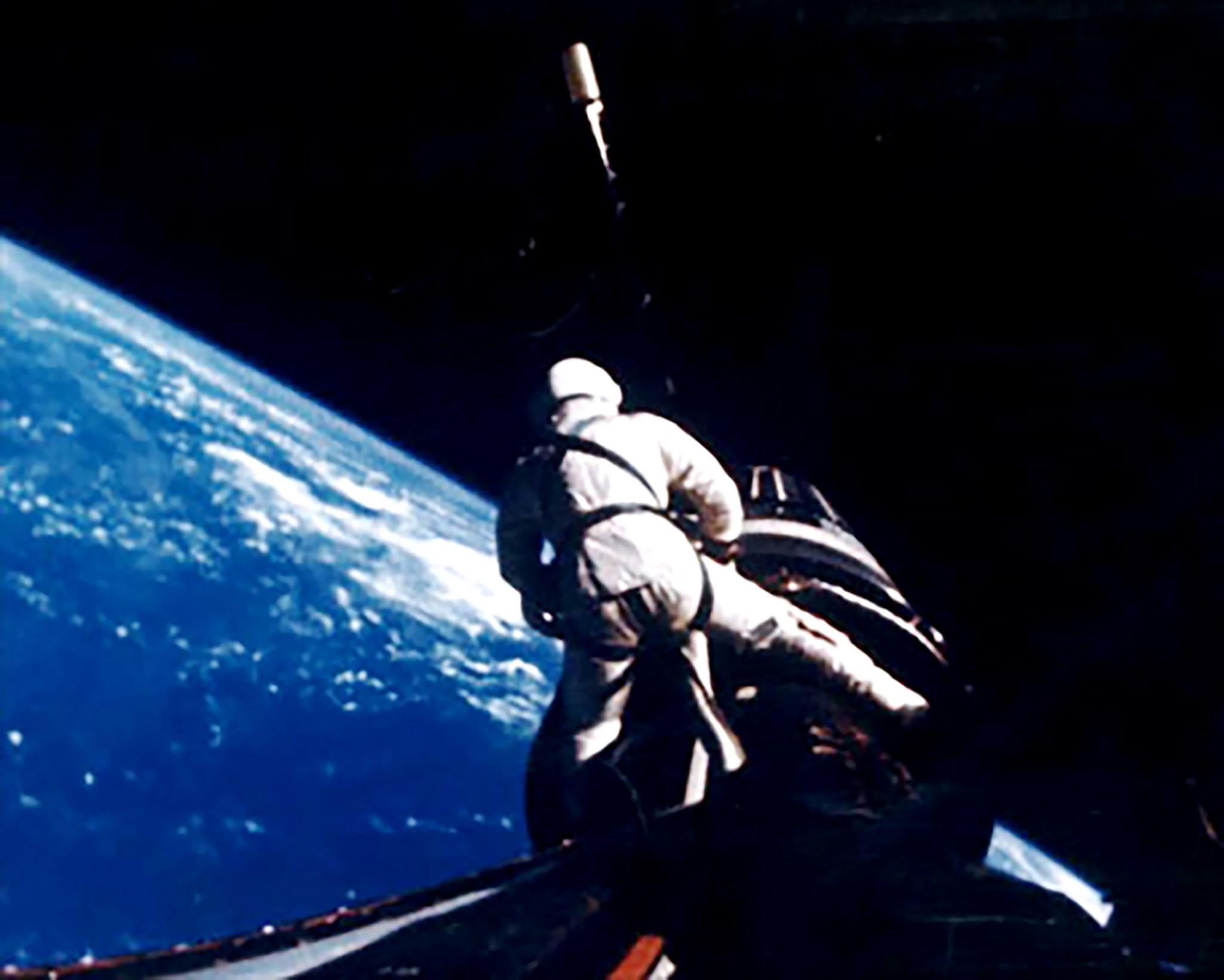
However, Gordon soon ran into problems similar to those encountered by Gene Cernan on Gemini IX and Mike Collins on Gemini X.
The task of attaching the tether was easy during training aboard the KC-135 aircraft which flew parabolas to create brief periods of weightlessness.
But working through extended periods without handholds proved far more difficult as Gordon tended to float away from his work making simple tasks more challenging.
Conrad asked, “How are you doing?”
“Tired, Pete,” said Gordon.
“All right,” Conrad said. “Just rest. You’ve got plenty of time.”
Several minutes into the spacewalk, Conrad reported to Mission Control that Gordon had the tether tightened on the Gemini’s docking bar, but “he’s breathing pretty hard.”
Due to the exertion, sweat was getting into one of Gordon’s eyes. Even though he rested for a few minutes, the sweat would not evaporate. Conrad decided to cancel an experiment with a power tool and end the spacewalk after only 33 minutes.
“Dick got so much sweat in his right eye that he couldn’t see any more,” Conrad said. “I didn’t want him to get any hotter doing any more work back there with the possibility of not being able to see out of the other one. So I called him in.”
The next task was a firing of the Agena’s 15,960-pound-thrust primary propulsion system (PPS) engine.
“Gemini XI, you have a go for the PPS burn,” said the capcom at the Canary Islands tracking station off the northwest coast of Africa.
For 26 seconds the Agena engine fired, boosting Gemini XI to 850 miles above the Earth, breaking the 475-mile altitude record set in July 1966 by Gemini X.
“Whoop-dee-do,” Conrad exclaimed as the Agena engine shut down.
Gordon was equally excited in his remarks to capcom Young, who had been command pilot on Gemini X.
“I agree with you, John,” Gordon said, “riding that PPS is the biggest thrill we’ve had all day.”
For the next three-and-a-half hours Conrad and Gordon described the view from this unprecedented vantage point.
“It really is blue,” Conrad said. “That water really stands out and everything looks blue. Obviously, the curvature of the Earth stands out a lot.”
“Sounds like you’re really way up there,” Young responded from Mission Control.
As Gemini XI continued on its 26th orbit, Conrad and Gordon reached the 850-mile apogee over the southern hemisphere.
“We’re looking straight down over Australia now,” Conrad said. “We have the whole southern part of the world out one window. Utterly fantastic.”
After a little more than two orbits at the higher altitude, the Agena PPS engine was fired again, lowering their orbit to 188 miles.
On flight day three, Gordon was slated to perform another spacewalk. Actually, it was more of a “space stand-up.” He positioned himself in the open hatch, standing on the spacecraft floor for two hours and eight minutes to photograph the Earth, clouds and stars. During that time, Conrad was maneuvering the spacecraft, pointing Gordon and his camera in the desired direction.
Shortly after the stand-up spacewalk, it was time to undock from the Agena and try out the “passive attitude stabilization” experiment.
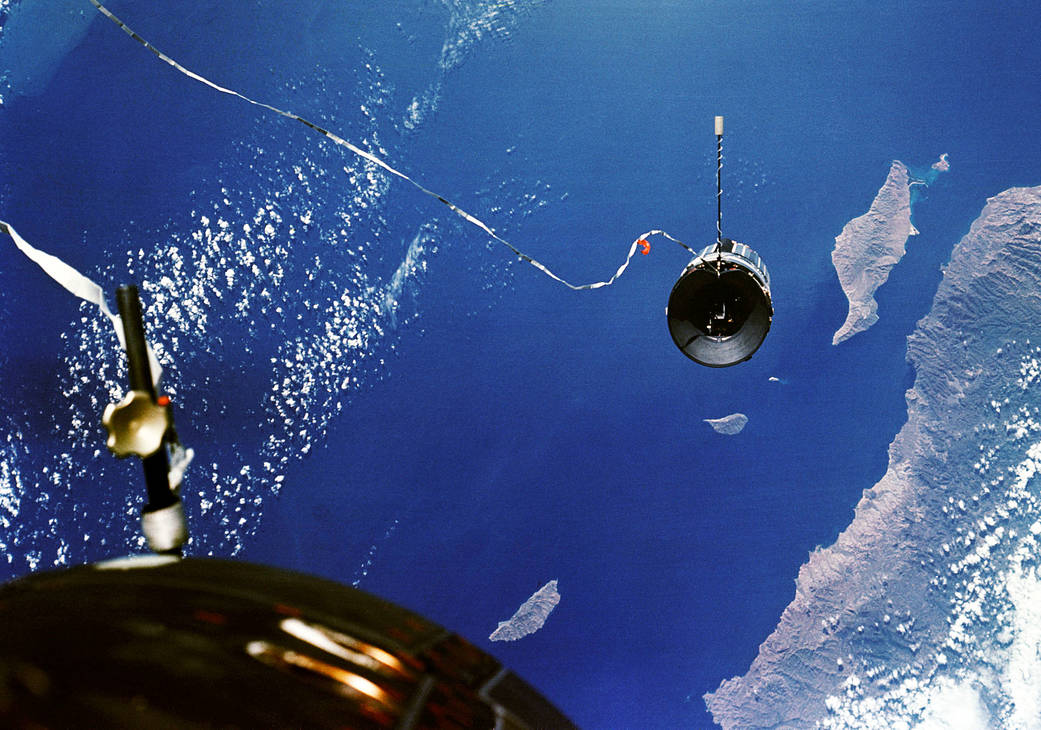
“We’re going to hate to leave this Agena,” said Gordon as they undocked from their rendezvous target over Hawaii. “It’s been kind to us.”
Gemini XI separated from the Agena with their spacecraft pointed nose-down toward the Earth. Conrad and Gordon maneuvered their craft to keep the tether taut between both. By firing their side thrusters to slowly rotate the combined spacecraft, they were able to use centrifugal force to generate about 0.00015 g.
“There is an artificial gravity field,” Gordon said. “It makes the camera move back very rapidly.”
The tether was released following two orbits of the artificial gravity experiment, allowing Gemini and Agena to go their separate ways.
The following day, Sept. 15, 1966, Gemini XI would become the first U.S. spacecraft to demonstrate a computer-controlled landing. Gemini XI’s retro rockets were automatically fired on the 44th orbit with the onboard computer performing the needed re-entry maneuvers.
The command pilots of earlier Gemini flights took the controls at about 75 miles up, using the spacecraft’s offset center of gravity to generate lift for changes in direction. For Gemini XI, the spacecraft automatically followed the computer commands.
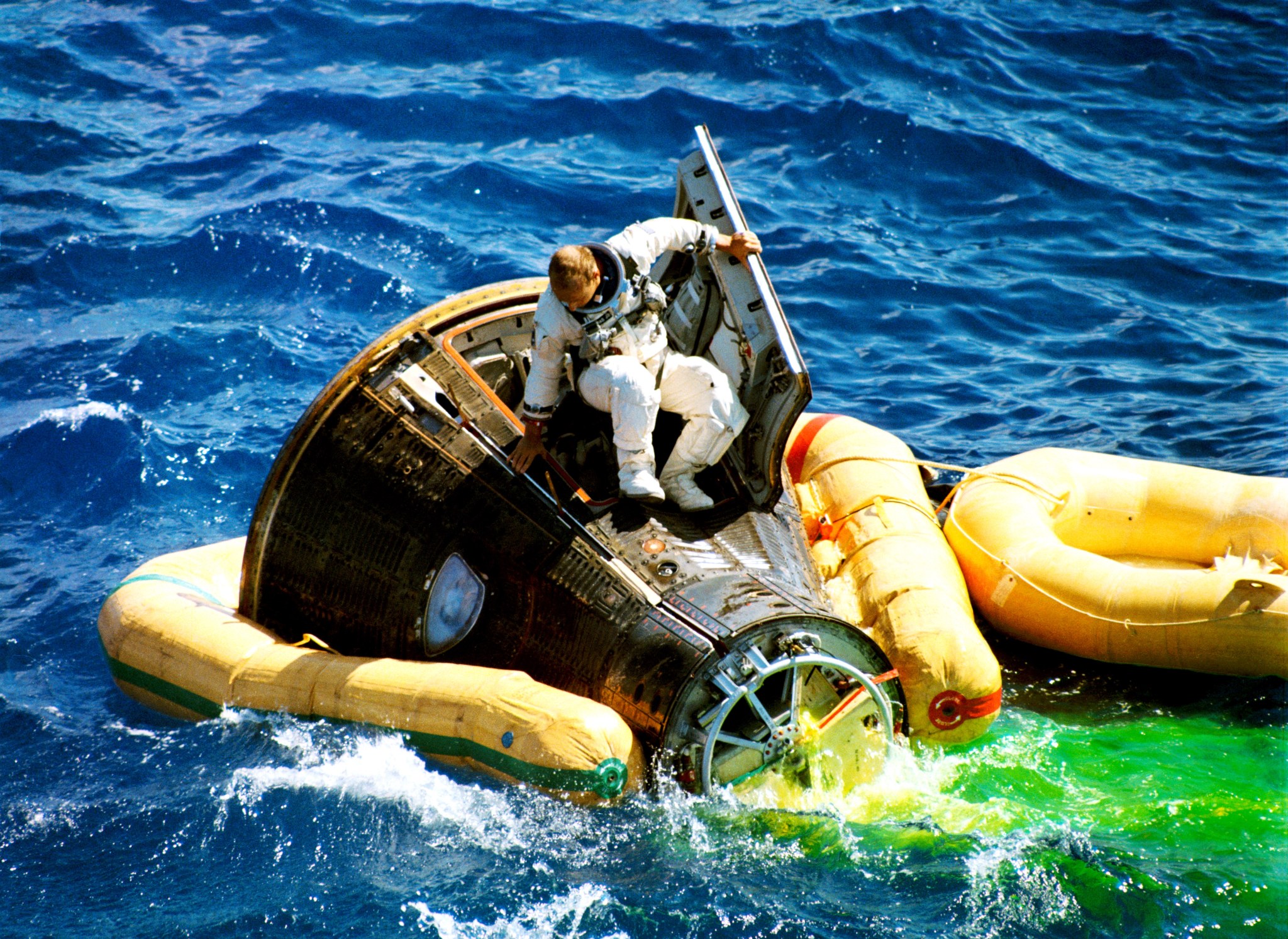
It worked well, with Gemini XI splashing down only 1.5 miles from the planned position in the Atlantic Ocean near its recovery ship, the USS Guam.
As NASA officials looked ahead to the final mission before the start of Apollo, spacewalking — also known in the agency’s vernacular as extravehicular activity — remained an unconquered challenge.
After Gemini XI, Manned Spacecraft Center Director Robert Gilruth stated, “Extravehicular activity (is) a primary objective of Gemini XII.”
By Bob Granath
NASA’s Kennedy Space Center, Florida
EDITOR’S NOTE: This is the eighth in a series of feature articles marking the 50th anniversary of Project Gemini. The program was designed as a steppingstone toward landing on the moon. The investment also provided technology now used in NASA’s work aboard the International Space Station and planning for the Journey to Mars. In November, read about solving the problems with spacewalking. For more, see “On the Shoulders of Titans: A History of Project Gemini.“




























